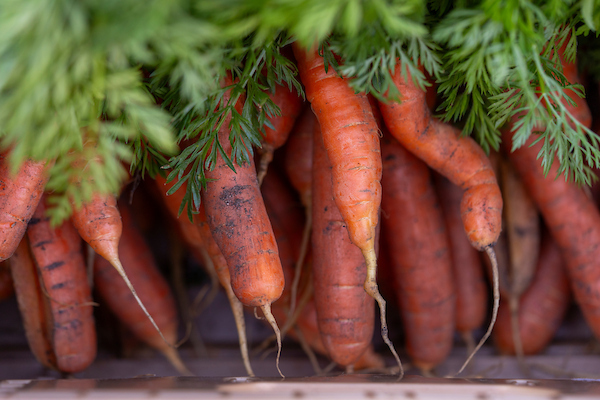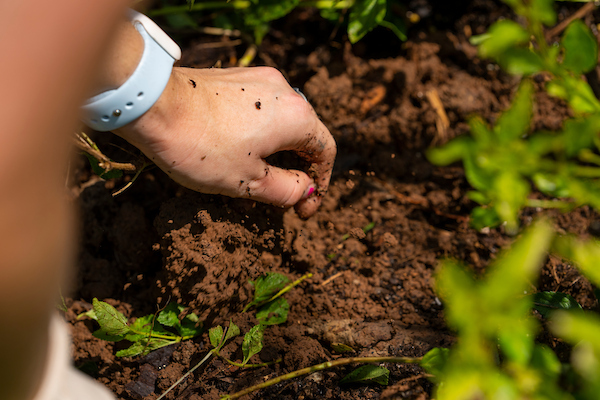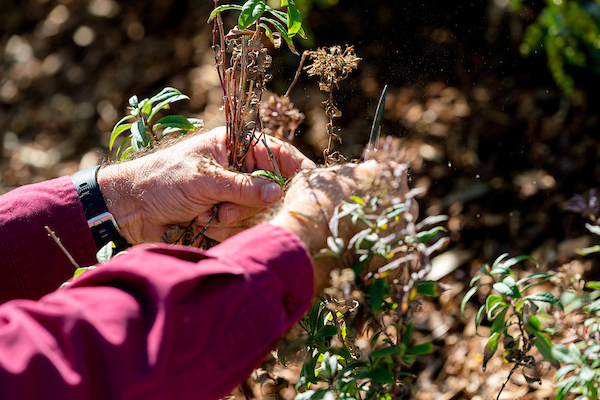Time to transition your garden for fall and start cool-season vegetables

It’s time to get some fall and cool-season produce started, according to a Texas A&M AgriLife Extension Service expert.
“No one wants to garden when it is blazing hot,” said Larry Stein, Ph.D., Texas A&M AgriLife Extension Service horticulture specialist and professor in the Texas A&M College of Agriculture and Life Sciences Department of Horticultural Sciences, Uvalde. “However, if you want to enjoy warm-season vegetables this fall, you have to plant now.”
Plan, plant cool-season crops now
Warm-seeded crops that need to be planted as soon as possible include sweet corn, winter squash and southern peas Cool-season vegetables, such as mustard, lettuce, arugula, broccoli and turnips from seed should also be started in well-prepared beds.
Cool-season crops such as carrots, beets, parsley, cilantro and spinach can be planted about mid-October in many locations. If using transplants, your planting dates can be somewhat delayed. Aggie Horticulture offers a regional fall planting guide that can direct gardeners.

Flower plantings at this time can provide landscape color for three seasons in Central, East and South Texas. Annuals set out early enough will bloom as soon as Thanksgiving, and frequently last until Memorial Day.
“Annuals that should soon be available in nurseries and garden shops include petunias, calendulas and pansies,” Stein said. “Resist the urge to plant flowers until the weather cools, though.”
Biennial flowers including poppies, larkspur, sweet peas and bluebonnets may also be planted now.
September Garden Guide

- Remove all old, spent garden plants, rework your planting areas and amend as needed with compost and slow-release fertilizer.
- Make sure pecans receive adequate water to fill out the kernels and promote healthy shuck opening.
- Rejuvenate heat-stressed geraniums and begonias for the fall season by lightly pruning, fertilizing and watering.
- Deadhead roses and other perennials and then apply a light fertilization for a fall bloom.
- Prune out dead or diseased wood from trees and shrubs. Hold off on major pruning until midwinter to avoid stimulating tender growth prior to frost.
- Continue to harvest okra, peppers, squash and other vegetables often to encourage production.
- Plant strawberry plants for harvest next spring.
- Assess the fire ant situation in your yard and develop a control plan.
Challenges for fall gardens
Unfortunately, water remains the question for many Texas gardeners as we move into September, Stein said. The drought monitor for the end of August showed 9 million Texans still in some level of drought conditions. Even though things are significantly better for many, there are still many regions in need of water.

September is usually the transition month from summer to fall, but there can be 100-degree days in September as well.
Sustaining adequate moisture as best as possible in the garden and landscape should be the No. 1 priority for late summer and fall. Ideally, water trees and shrubs by giving them at least 1 inch of water per week, delivered slowly, around the plants as far out as the “dripline” extends.
“If possible, don’t allow plants with green fruit or berries to suffer from lack of moisture,” Stein said. “Hollies will frequently drop their fruit under drought conditions and potential berry color will be lost for the fall.”
Stein said other challenges for fall gardens can include battling heat, insects like white flies and spider mites, and keeping plants well-watered until they become established.
“The greatest challenge is getting a stand with cool-season crops when it is so hot,” he said. “A light compost layer over the seed bed can help.”
He also reminded gardeners to replenish mulches around trees and shrubs.
“You may have heard the Jerry Rice quote, ‘Do today what others won’t do, so that you can do tomorrow what others can’t,’” Stein said. “That is great advice that is perfectly applicable to fall gardening.”
PHOTO: The time to plant cool-season crops like carrots is fast approaching while warm-seeded crops need to be planted as soon as possible. (Michael Miller/Texas A&M AgriLife)



